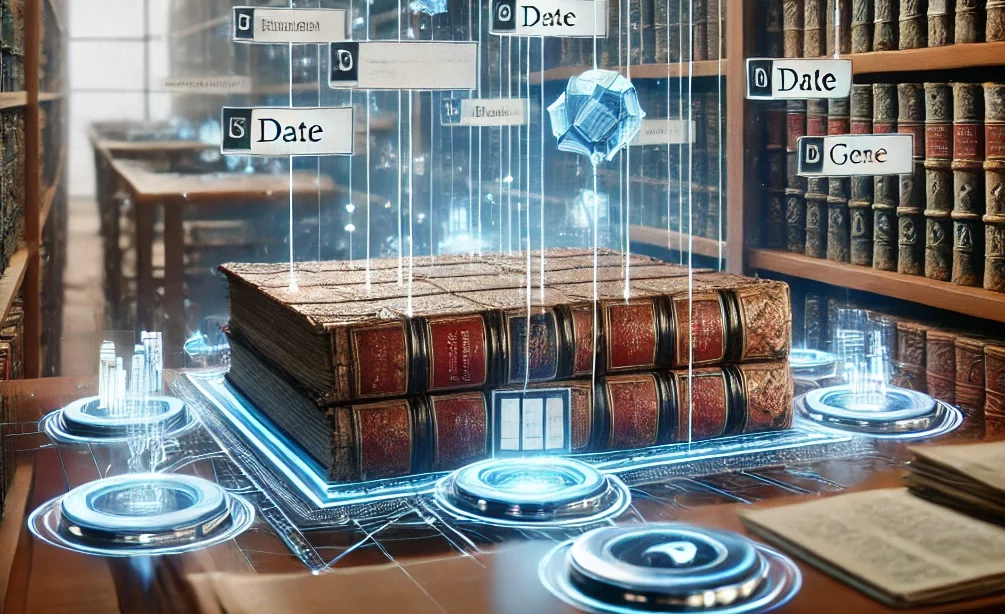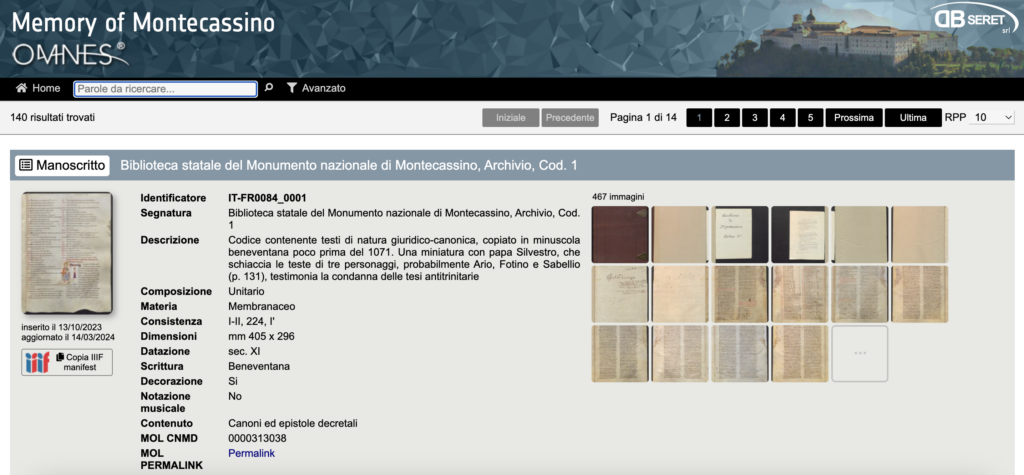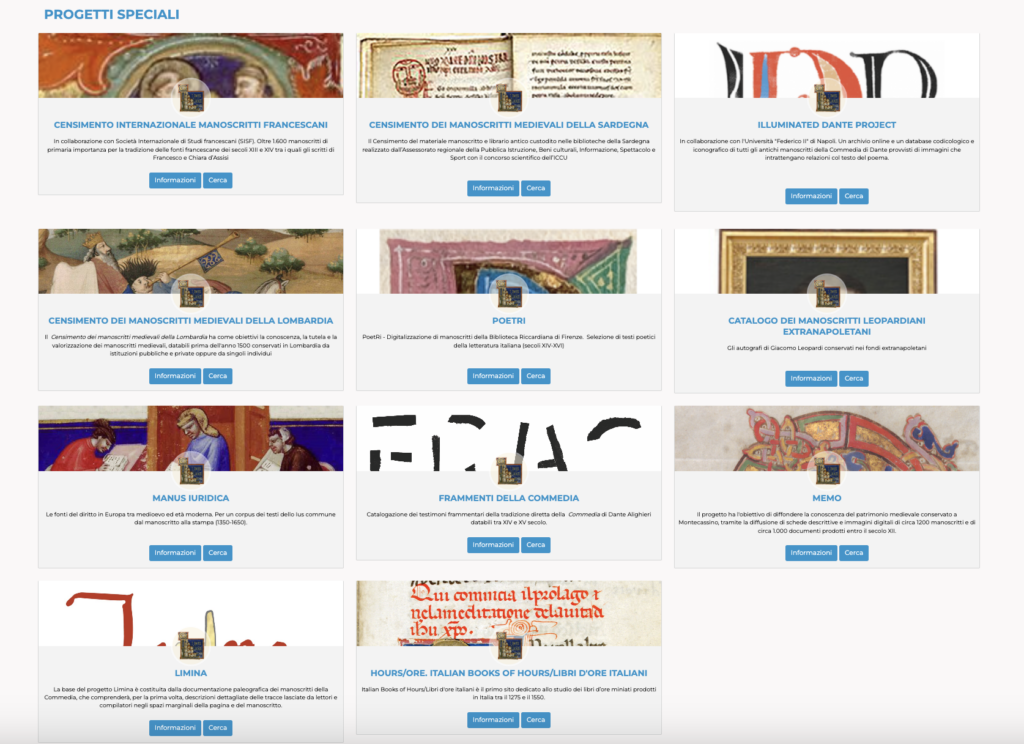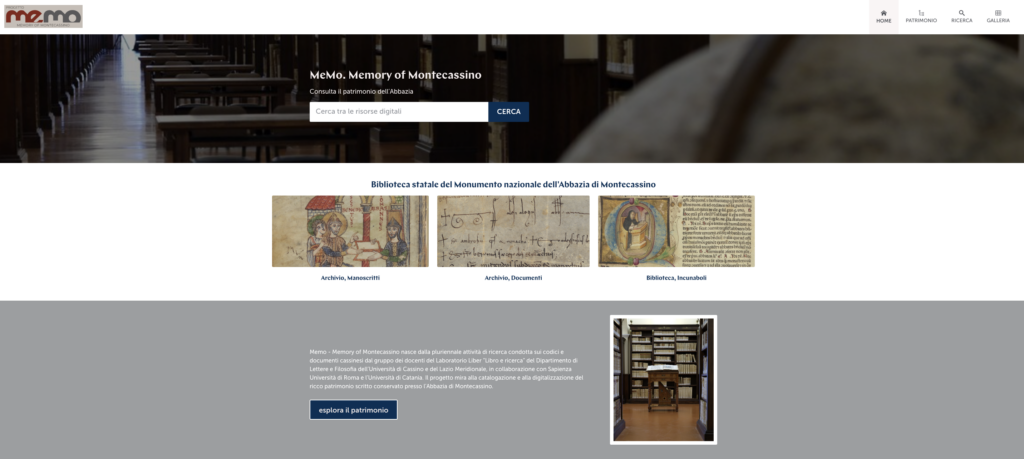
Navigate MeMo
The MeMo project aims to the free digital access to the manuscript heritage preserved at the Abbey of Montecassino. This goal has been achieved through three main channels of consultation and research.
The first digital space is provided by the multi-functional platform Omnes, developed by DBSeret, which enables the storage, management and search of data and content, as well as the processing and long-term preservation of images. Omnes makes also possible to visualize digital objects through specific APIs (Application Programming Interface) compatible with the IIIF (International Image Interoperability Framework) standard: each manuscript is provided by a brief description and the permalink to MOL (Manus Online).

Manus Online is the database that collects descriptions and digitizations of manuscripts held in Italian libraries, both public and private and ecclesiastical. MOL’s activities began in 1988 with a census managed by the Central Institute for the Union Catalogue (ICCU).
In the context of MOL, MeMo occupies its own place among the special projects(MeMo in MOL) with the aim of providing users with access to more in-depth descriptions of manuscripts and documents, with timely references to the bibliography. At present, there are approx. 140 records of manuscripts and codices preserved in the Archives of the State Library of the National Monument of Montecassino, some already accompanied by their respective digitizations.

The third and fundamental tool for accessing the digital collection is MeMo.dl, a digital library developed by the IT company Hyperborea, which through the web application Arianna4 handles the management, description and publication of the digitized codices, always taking advantage of the IIIF display protocol. A direct reference to the section Heritage is accessible through the Menu header of this site. The platform’s strengths are collecting in one digital space the references to Omnes and MOL records, the possibility to search by authorities data, such as person names (e.g., scribes, abbots, authors, and translators), places, writings, titles, and many others.

The access paths towards the manuscripts digitizations, described here, are declined for different levels of depth and specificity. They also ensure the integration and interoperability of the results collected during the workflow of the MeMo project. This choice makes it possible to engage a wide range of users interested in learning more about Montecassino’s heritage.

